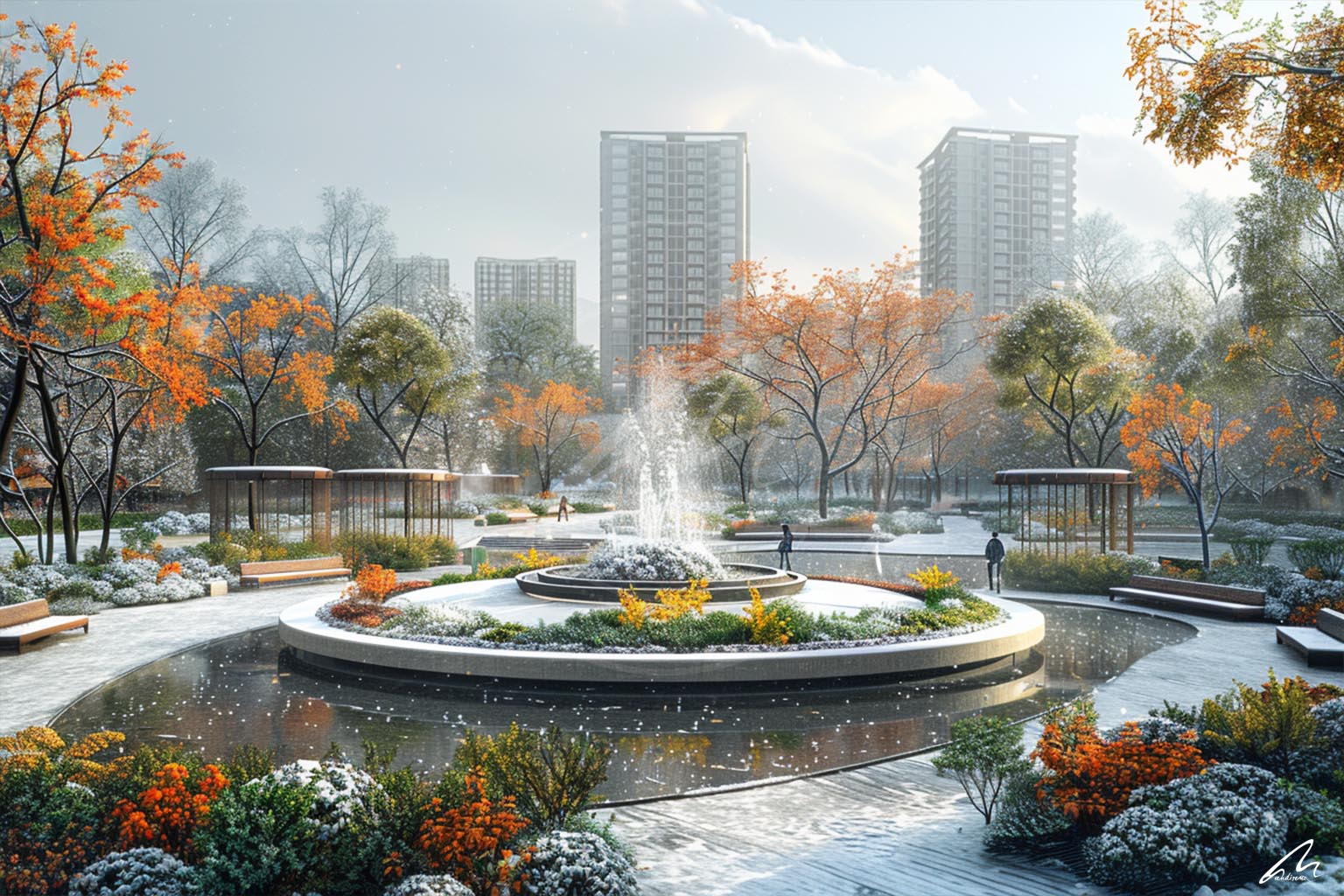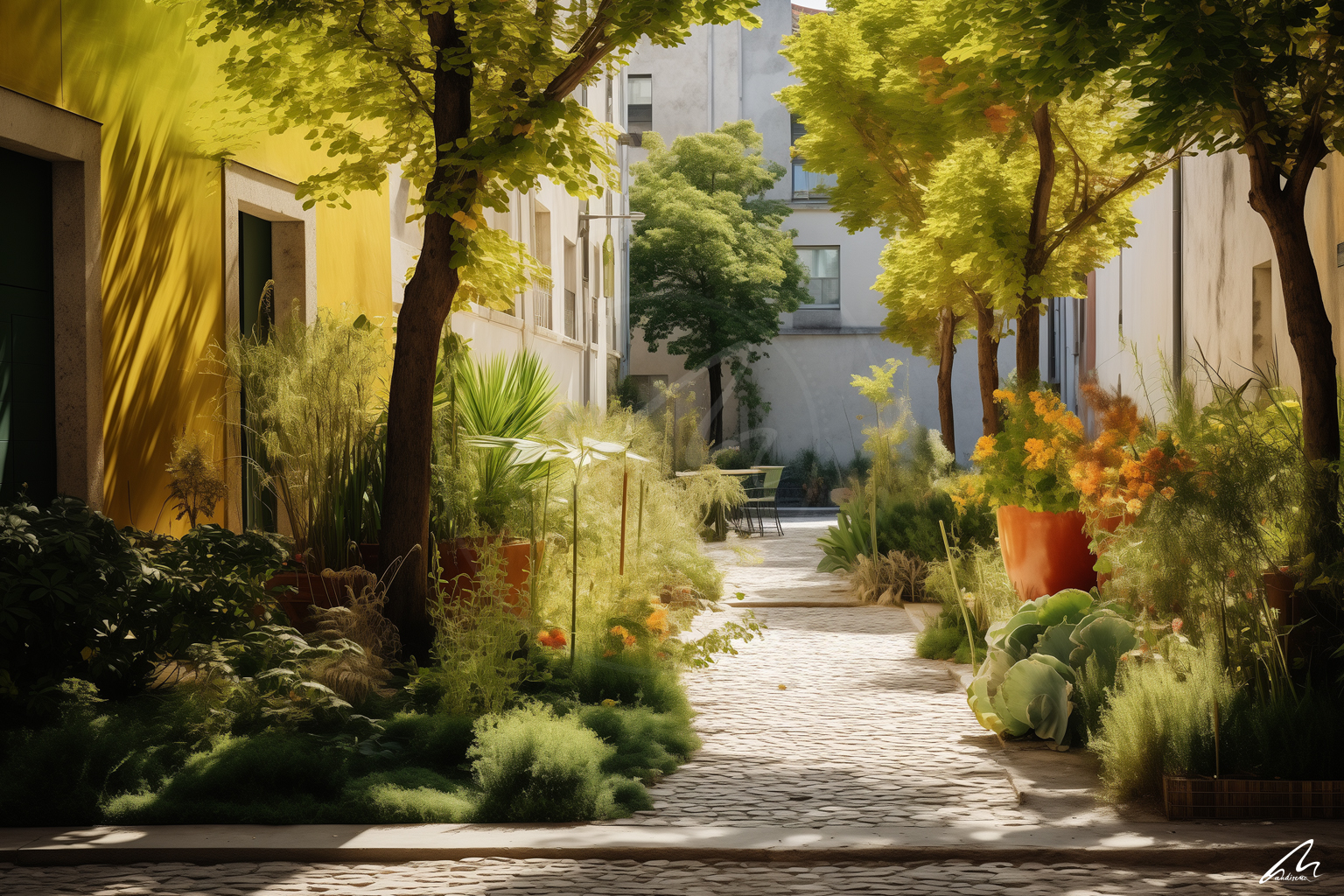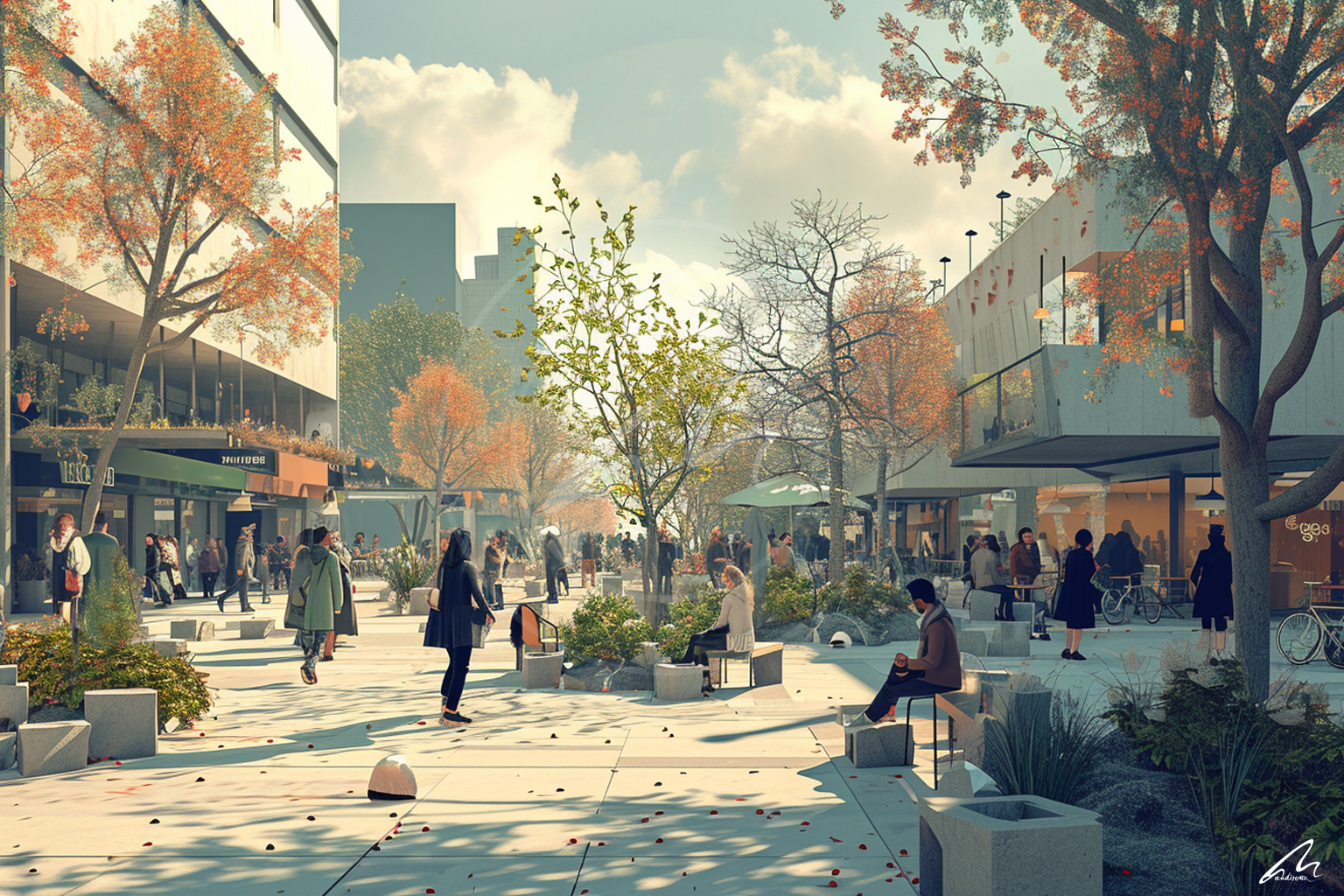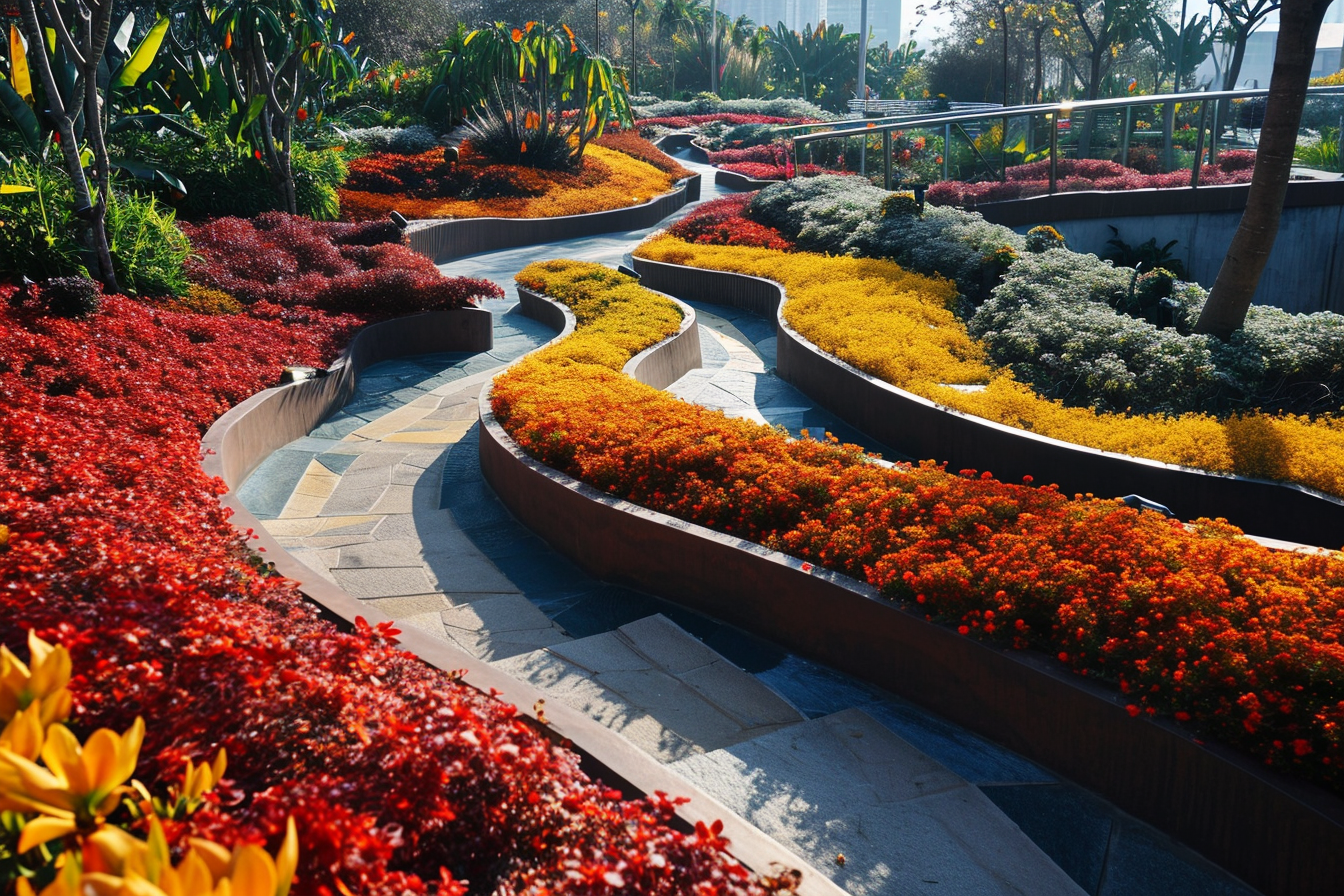The Power of Sensory Experiences in Urban Design
Hey there, design aficionados! Today, we’re diving deep into the captivating world of urban design, shining a spotlight on a factor often overlooked—the Power of Sensory Experiences. As we embark on this journey, let’s peel back the layers and uncover how designing with our senses in mind can transform the urban landscape.
To drive this point home, let’s take a stroll down the iconic streets of Barcelona’s La Rambla. The vibrant hues of La Rambla not only catch the eye but infuse the entire space with an infectious energy, inviting everyone to be part of the sensory spectacle.
Enhancing the Sense of Place
Envision a leisurely stroll through a lively city park, where the vibrant hues of blossoming flowers saturate the air with a delightful fragrance. Alternatively, picture yourself meandering through a tranquil neighborhood, surrounded by the gentle sounds of leaves rustling and birds chirping, creating an atmosphere of serene calm. Whether consciously observed or subconsciously absorbed, these sensory experiences play a significant role in shaping our perception of urban spaces and influencing our overall well-being.
“Color in certain places has the great value of making the outlines and structural planes seem more energetic.”
Antoni Gaudí

The Significance of Sensory Experiences in Urban Design
Traditionally, urban design has concentrated on the practical aspects of city creation, emphasizing efficient transportation networks, sufficient housing, and access to essential services. While undeniably crucial, these considerations often overshadow the impact of sensory experiences on the overall quality of urban life. By integrating sensory elements into urban design, we can craft spaces that are more:
Welcoming and Inviting: The incorporation of inviting textures, soothing colors, and pleasant aromas can foster a sense of comfort and ease for those inhabiting the space.
Vibrant and Engaging: Infusing spaces with dynamic lighting, lively music, and enticing scents contributes to an environment brimming with energy and excitement.
Inclusive and Welcoming: Thoughtful attention to sensory needs ensures that everyone, irrespective of abilities or preferences, can fully relish and engage with a space.

Possibilities in Urban Design
The potential for integrating sensory experiences into urban design is boundless. Consider the rise of smart city technologies, where urban spaces adapt dynamically to citizens’ needs. Picture smart lighting syncing with natural circadian rhythms, interactive public art installations responding to touch, and green spaces designed not just for the eyes but for a holistic experience. This is the future—cities actively engaging with our senses.
Today’s spotlight is on the visual, auditory, olfactory, and tactile realms – we’re talking about turning your urban space into a symphony for the senses.
Harnessing the Visual Realm:
Vision takes the reins in shaping our urban experience, and it does play a lead role. Colors, textures, and light are the maestros here, conducting a symphony of emotions. Bright, vibrant hues? That’s your ticket to revitalization and energy. Muted tones? Hello tranquility and relaxation. And textures – from the smooth touch of polished concrete to the rugged embrace of tree bark – they’re the notes that add depth and intrigue. Natural light mingling with artificial illumination? That’s the secret sauce for creating atmospheres that are both dramatic and downright inviting.
The Captivation of Auditory Elements:
Now, let’s talk sound – the unsung hero of urban vibes. The hustle and bustle of traffic and city life? That’s the heartbeat of a lively atmosphere. But wait, there’s more. The gentle whispers of water fountains and the sweet melody of birdsong? That’s your ticket to peace and tranquility. And don’t even get me started on music – the ultimate mood-setter. Upbeat tunes? They’re the caffeine for public spaces. Calming melodies? That’s the soundtrack to a serene day in parks or libraries.
The Enchantment of Fragrance:
Alright, let’s give our noses some love. Olfaction, often the unsung hero in design, is a game-changer. The sweet scent of freshly baked bread or the floral embrace of blooming flowers? That’s positivity and invitation wafting through the air. Unpleasant odors? Well, they’re the party crashers. Thoughtfully chosen scents? They’re like a signature for a place – a bakery with warmth, a museum with reverence. Fragrances aren’t just scents; they’re identity and memory in a bottle.
Embracing Tactile Experiences:
Surfaces are the tactile canvases of urban design. Smooth, hard surfaces like polished stone scream modernity and sleekness. But throw in some rough, uneven textures like wood or brick, and now you’re talking warmth and history. The feel of surfaces is the secret ingredient, whether it’s the bumps of a water fountain or the textured pattern of a sidewalk – it’s all about adding that layer of sensory richness to the concrete jungle.
There you have it, urban maestros. Visuals, sounds, scents, and touch – it’s a sensory orchestra out there, and your designs are the conductors. So go ahead, create a symphony that resonates with the soul of your city!
Challenges to Overcome
Yet, as we tread this path, challenges arise. How do we balance the allure of technological innovation with the authenticity of a city’s identity? It’s a tightrope walk, as we heed the cautionary words of seasoned designers who advocate for a human-centric approach. It’s about finding that sweet spot where innovation enhances rather than overshadows the human experience.
Now, let’s break down the essentials when it comes to creating sensory experiences. We’re talking about a dance of elements here, and you want to make sure you’ve got all your moves right.
Cost:
Hold onto your hats because creating sensory experiences can be a bit of a wallet-squeezer, especially when you’re dabbling with materials like water, plants, and art. These things don’t come cheap, so you might need to befriend your budget or find some creative cost-cutting measures. Just remember, quality counts, and sometimes you’ve got to pay to play.
Maintenance:
Like a finely tuned machine, sensory elements require some regular TLC to stay in tip-top shape. Whether it’s the gentle caress of water features or the pruning of those oh-so-essential plants, neglect is not an option. You’ve got to commit to the upkeep if you want your sensory symphony to keep playing.
Community Engagement:
This ain’t a solo act, folks. Get the community involved in the design process. You want these sensory experiences to hit the right notes with the people who’ll be soaking them in. They’re the audience, so don’t leave them out of the show. Listen to their feedback, incorporate their vibes, and ensure your design resonates with the locals. You can read the article about “The Role of Public Space in Community Building” here.
Cultural Sensitivity:
Let’s not forget the cultural flair. Your sensory experiences should be like a global buffet, catering to the diverse tastes of the populations that might grace your space. Make sure it’s culturally sensitive, respectful, and has the right kind of spice for everyone.
Accessibility:
Roll out the red carpet for everyone, my friends. Sensory experiences should be accessible to everyone, including those with disabilities and sensory impairments. No VIP-only areas here – make sure everyone can join the party.
Balance and Harmony:
You’re conducting a symphony of the senses, not a cacophony. Strive for balance and harmony in your sensory design. Too much of a good thing can lead to sensory overload, and we don’t want our users fleeing the scene. Find that sweet spot and create an experience that’s just right.
Mother Earth deserves a standing ovation. Consider the environmental impact of your sensory elements. Opt for natural materials, embrace energy-efficient lighting, and make sure your design leaves a positive mark on the planet.

Examples of Sensory-Rich Urban Designs
Let’s take a stroll through some prime examples from cities that have mastered the art of turning urban spaces into sensory wonderlands.
Sensory Garden (Sinnenas trädgård), Stockholm:
Picture this – a park that’s not just a pretty face but a full-on sensory symphony. The Sensory Garden in Stockholm hits all the right notes with fragrant plants, tactile sculptures, and interactive water features. It’s like a playground for your senses, catering to folks of all abilities. Now that’s what I call a green oasis that truly speaks to everyone.
Get ready for a park that turns sound into an art form. The Soundscape Park in Singapore doesn’t just have your usual rustling leaves – oh no! Specially designed sound installations transform this park into a sonic orchestra. It’s like nature and music decided to have a jam session, creating an immersive experience that’ll have you listening with wide-eyed wonder.
The Sensory Garden in Portland, Oregon:
Portland, you’re doing it right. The Sensory Garden here is a public haven for all ages and abilities. With a mix of plants boasting different textures and scents, along with water features and interactive elements, it’s a sensory smorgasbord. People flock here to unwind, play, and reconnect with nature. Portland, you’ve nailed the art of making a garden more than just a garden – it’s an experience.
The Dancing Fountains in Dubai:
Dubai knows how to put on a show, and the Dancing Fountains are the city’s star performers. Tourists, hold onto your hats – these fountains are like liquid choreography set to music and light. It’s a spectacle that adds a dash of entertainment to Dubai’s cultural landscape. Water, light, and music – now that’s a sensory trio that’ll leave you in awe.
Conclusion
In the grand scheme of things, sensory experiences aren’t just a fancy add-on; they’re the secret sauce that transforms urban spaces into vibrant, enjoyable, and inclusive havens. Urban designers, take note – by catering to the needs and preferences of all users, you’re not just creating functional cities; you’re crafting living, breathing experiences that stand the test of time.
Now, dear readers, the floor is yours. Ever stumbled upon a place that etched itself into your memory because of its sensory prowess? Are there challenges and opportunities you see in infusing sensory experiences into urban design? Spill the beans – let’s turn this into a conversation. Your experiences and thoughts could be the inspiration someone’s been waiting for!
Mahdiseño
As an architect, landscape architect, and digital artist, I'm passionate about the planet and want to contribute to our collective understanding of the challenges we face.
Recent Posts
The Art of Detailing: Why Small Elements Matter in Landscape Design
The Power of Sensory Experiences in Urban Design
The Role of Public Space in Community Building: Shaping Vital Connections
The Influence of Urban Design on Social Equity
The Tapestry of Life: Embracing Biodiversity in Urban Design
Urban Oasis: Reviving Cities through Innovative Landscape Architecture
We Can Make a Difference TOGETHER
Loving the planet is one of the most important things we can do as human beings. Earth is the only planet in our galaxy that can support life, and it provides us with essential life support such as air to breathe. Unfortunately, our planet is facing many challenges such as climate change, deforestation, pollution, and loss of biodiversity. It is up to us to make a difference and take action to protect the planet.
 Let’s shake the world.
Let’s shake the world.











Comments (3):
cerebrozen reviews
I genuinely savored the work you’ve put forth here. The outline is refined, your authored material trendy, however, you seem to have obtained some trepidation about what you wish to deliver next. Assuredly, I will revisit more regularly, akin to I have nearly all the time, provided you maintain this upswing.
HealXO
Wow superb blog layout How long have you been blogging for you make blogging look easy The overall look of your site is magnificent as well as the content
Mahdiseño
Thank you for your kind words.